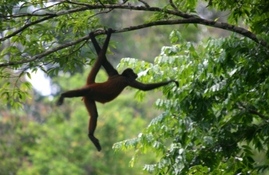1. High Levels of solar radiation be detrimental to humans in the following ways. It can cause humans to get skin cancer because of overexposure to the UV rays. To much exposure to solar radiation can cause sunburn when the skin cells are damaged. It can also have a negative effect on our immune system making it harder to fight off illness. It is also known to damage vision if you absorb the solar radiation through your eyes.
2.
- There really isn't a short term adaptation to solar radiation the body doesn't react very quickly to this kind of stress. That makes UV radiation very dangerous and something that should be protected against.
- Humans Facilitative adaptation to this stress is our ability to tan. After excessive exposure to UV rays our skin becomes darker as a defense mechanism against the solar radiation. Melanin is produced as we get exposure to the sun. There are two types of melanin, pheomelanin which is red in color and is seen when someone gets a sunburn. The second is eumelanin which is dark brown and seen when you get a tan. Melanin protects the body by absorbing solar radiation.
- An example of developmental radiation is people who have very dark skin that is passed down from generation to generation. This adaptation has changed the DNA of those members of the population because of the long term stress caused by solar radiation. Their skin pigment can not change like a tan, it offers permanent protection from the UV rays damaging effects.
- An example of cultural adaptation is wearing clothes to protect skin from harmful UV rays, but more importantly the development of sunscreen which acts as a shield for the skin and protects against the sun suns damaging effect on skin.
3. The benefits of studying human variation is that we learn how our bodies react to certain environmental stressors. This will lead to us learning the risks associated with different environments. Also we will be able to protect ourselves from these risks. One example is studying how the sun's rays are absorbed into our skin and developing sun screen that stops a certain amount of those rays from damaging skin. Another example is studying diseases such as rickets and learning why a lack of sun can be so detrimental to our health. Eventually this will lead us to cures and treatments for those diseases.
4. I would look at race to understand variations of adaptations because most races were geographically isolated at one point in time which means they were subject to similar environmental stressors. This means you can see the long term effects of certain environmental stressors by looking at race. However, it would be better to look at areas with a specific environmental influence rather then race because our society has become very integrated and people not longer live in only one geographic area so just because a person is a member of a particular race does not mean they were subject to the similar environmental conditions. To study all other aspects of how our environmental stressors effect us you should look at people from a specific geographic group that has the environmental stressor you are looking at. It does not matter what race the people are as long as they are exposed to the same stressors.










